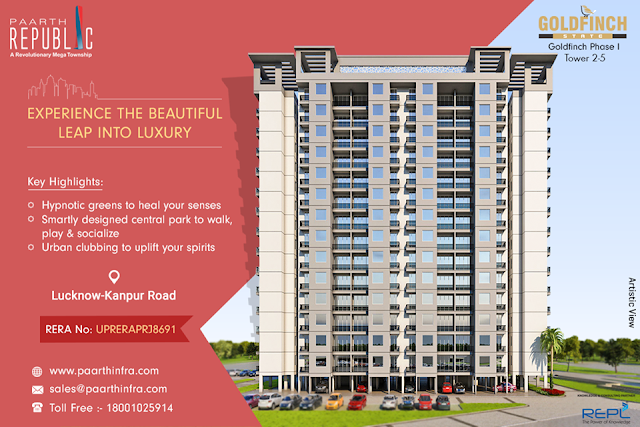Cities often experience
growth either physically, by population, or by a combination of both. Urban sprawl refers to the migration of a
population from populated towns and cities to low density residential
development over more and more rural land.
The end result is the expansion of the city limits and growth of
suburbs. Urban sprawl in recent times is a subject of popular debate between
policy makers and environmentalists due to the increased pressure on
infrastructure, congested traffic, environmental degradation and shortage of
housing in these areas.
This article discusses the characteristics, causes and effects of urban sprawl in India.
This article discusses the characteristics, causes and effects of urban sprawl in India.
Characteristics of Urban Sprawl
Urban sprawl is defined
as low density residential and commercial development on undeveloped land.
Sprawl is also considered to be an unplanned outgrowth of urban areas along the
periphery of the cities, along highways, and along the road connecting city. It
also refers to the outgrowth of urban areas caused by uncontrolled,
uncoordinated and unplanned urban growth. Migration and urban sprawl go hand in
hand and have become increasingly common in cities like Lucknow over the last
few decades.
Causes of Urban Sprawl
Urban sprawl can be
caused due to different reasons. These
causes will mainly include:
Lower Land Rates: Lower land and property prices in
outer suburbs of cities like Lucknow, have made people want to stop settling in
congested core city areas and want to venture further out.
Improved Infrastructure: When the government spends more on
improved infrastructure like roads and mass transit systems connecting far
flung areas in the city, people get motivated to shift to these areas for
better facilities with fewer crowd.
Rise in Standard of Living: As standards of living improve and the
average family income increases, people have the ability to pay more to travel
and commute longer distances to work and back home. This encourages them to shift
to sub urban areas where they can buy better and bigger houses.
Lack of Urban Planning: Congested core city areas with
unprecedented development, fewer tress, lack of green cover, traffic jams, and
poor infrastructure force people to move out to new areas. This is the reason
why many new residential projects in Lucknow have developed in and around suburban
areas like Amar Shaheed Path, Hazratganj and Gomti Nagar. People generally
prefer to live in areas that are less trafficked and calmer. This leads to the
growth of urban sprawls.
Lower House Tax Rates: Property taxes and other taxes are
usually lower in the suburb. To avoid paying higher taxes, people may be
encouraged to shift to these areas.
Rise in Population Growth: With increasing population growth the
pressure on the city's civic infrastructure rises. As a city grows beyond
capacity, the local communities continue to spread farther from city centers.
Consumer Preferences: Often higher income group people
prefer to buy larger homes with more bedrooms, bigger balconies and bigger
lawns. Properties that are newly developed in suburban areas usually have high
end facilities due to higher availability of land and FAR. This also causes
urban sprawl as this option is not available in crowded cities.
Effects of Urban Sprawl
It is important to know
both the causes and effects of urban sprawl in order to understand urban
planning issues in a given city. Some of the effects of urban sprawl are
discussed below.
Increase in Public Expenditure: With growth in urban sprawl, public
expenditure also increases building infrastructure and providing amenities in
these areas.
Increased Traffic: Urban sprawls lead to more traffic on
the roads, more air pollution and more accidents that need to be dealt with.
Environmental Issues: When urban hinterlands are developed
more of agricultural land gets converted to residential and other uses. This
reduces green cover and increases environmental issues.
Impact on Social Lives: When people move to low density areas,
there is inevitably effect on their social lives. They don’t have neighbors that live as close,
which means that they won’t really stay as social as they should.
As long as there is
urban development, expansion of city limits is inevitable as more people shift
to the outskirts for improved living environment. While, urban sprawl has its
own disadvantages, the positive outcome is that it leads to less overcrowding
in central city areas. While some may find this useful, others may want to
steer clear of it. However, it will happen naturally unless development control
regulations are brought into place by the government.
Summary: Urban Sprawls are a common phenomenon
witnessed in Indian cities these days. This article gives insight into the
causes and effects of urban sprawl.








